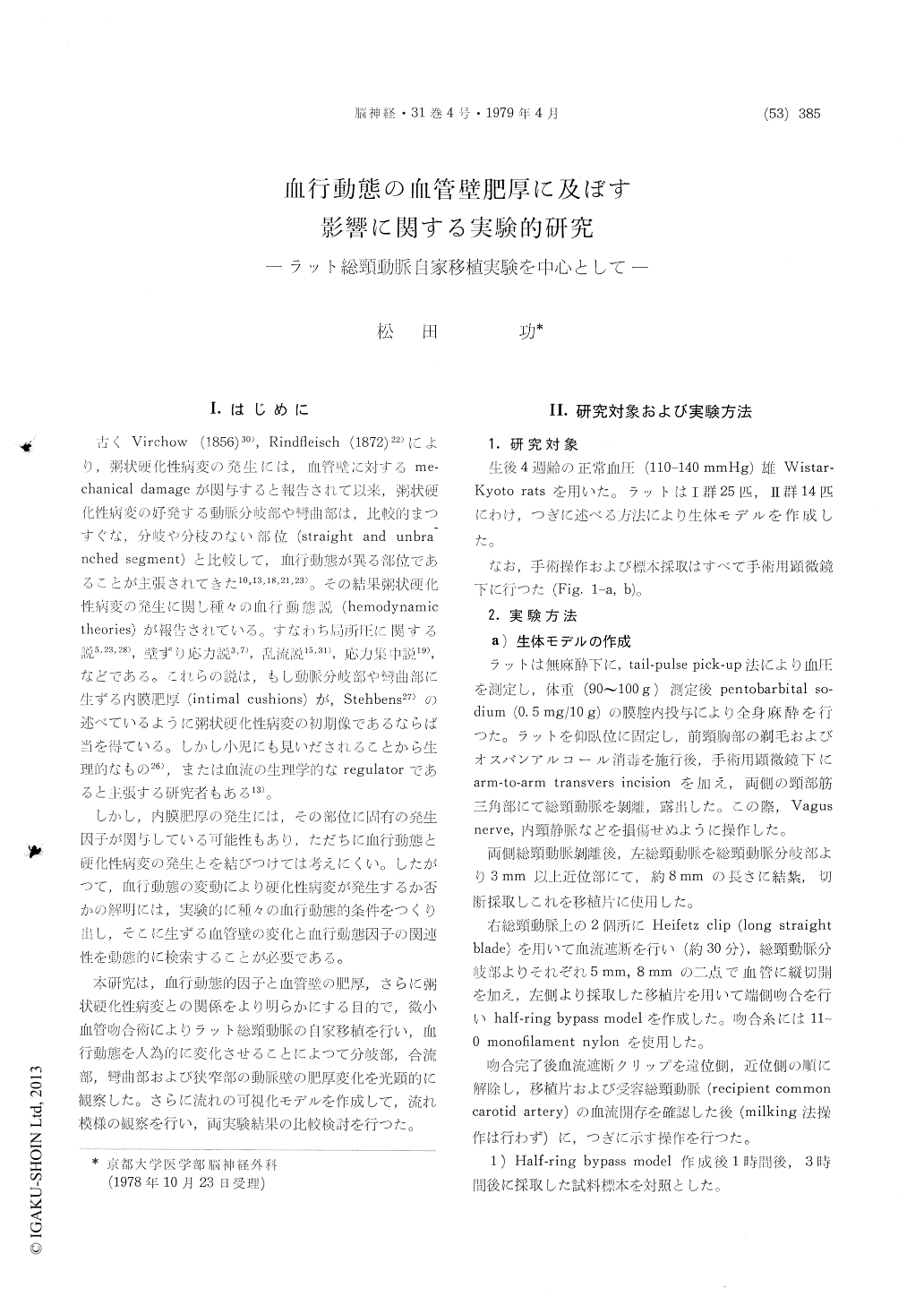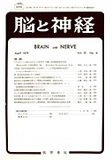Japanese
English
- 有料閲覧
- Abstract 文献概要
- 1ページ目 Look Inside
I.はじめに
古くVirchow (1856)30),Rindfleisch (1872)22)により,粥状硬化性病変の発生には,血管壁に対するme—chanical damageが関与すると報告されて以来,粥状硬化性病変の好発する動脈分岐部や彎曲部は,比較的まつすぐな,分岐や分枝のない部位(straight and unbranched segment)と比較して,血行動態が異る部位であることが主張されてきた10,13,18,21,23)。その結果粥状硬化性病変の発生に関し種々の血行動態説(hemodynamictheories)が報告されている。すなわち局所圧に関する説5,23,28),壁ずり応力説3,7),乱流説15,31),応力集中説19),などである。これらの説は,もし動脈分岐部や彎曲部に生ずる内膜肥厚(intimal cushions)が,Stehbens27)の述べているように粥状硬化性病変の初期像であるならば当を得ている。しかし小児にも見いだされることから生理的なもの26),または血流の生理学的なregulatorであると主張する研究者もある13)。
しかし,内膜肥厚の発生には,その部位に固有の発生因子が関与している可能性もあり,ただちに血行動態と硬化性病変の発生とを結びつけては考えにくい。したがつて,血行動態の変動により硬化性病変が発生するか否かの解明には,実験的に種々の血行動態的条件をつくり出し,そこに生ずる血管壁の変化と血行動態因子の関連性を動態的に検索することが必要である。
For the purpose of studying the relationship between the thickening of the arterial wall and/or atherosclerosis, and hemodynamic factors, an ex-perimental half-ring bypass model was micro-surgically made using an autograft in common carotid artery of Wistar-Kyoto male rat. Two models, one with an induced stenosis (group 1), and the other without any stenosis (group II) were made. Blood flow in the common carotid artery was measured with an electromagnetic flow meter, the outer diameter and heart rate were measured, and the dynamic parameter (Reynolds number, Womersley number and unsteadiness parameter) were calculated for the common carotid blood flow. For the purpose of comparison, similar half-ring bypass models were made of polyethylene tubing in such a way that their geometry was analogousto the in vivo models.
Pattern of flow through the polyethylene circuit was photographically recorded, the histologic changes of the arterial wall of in vivo model were studied by light microscopy, and the relationship between flow pattern and was thickening was analized.
In group I, marked histologic changes were found in the poststenotic segments, while in group II, severe wall thickening was found in the entire curved segments. In both groups, mild teickening was observed in the neighborhood of bifurcations and junctions. In group I, mild thickening was also seen in the curved segments. In both groups, the wall thickening was found in the junctional points, however, no histologic changes were found at the apex of the bifurcation apart from thereparative changes at the site of anastomosis.
From the results of the present study, it is con-cluded that the histologic changes in the arterial wall correlate well with the flow patterns. Furthermore, the histologic changes in the lateral angle at bifurcation resemble closely to early changes of atherosclerotic lesions. The thickening of the arterial wall is caused by some unusual flow patterns, such as low-shear or disturbed flow, and hemodynamic factors effect on the development of arterial wall thickening and atherosclerotic changes.
Furthermore, the in vivo model used in this experiment is useful for studying the genesis of the atherosclerotic process and its time-related development.

Copyright © 1979, Igaku-Shoin Ltd. All rights reserved.


